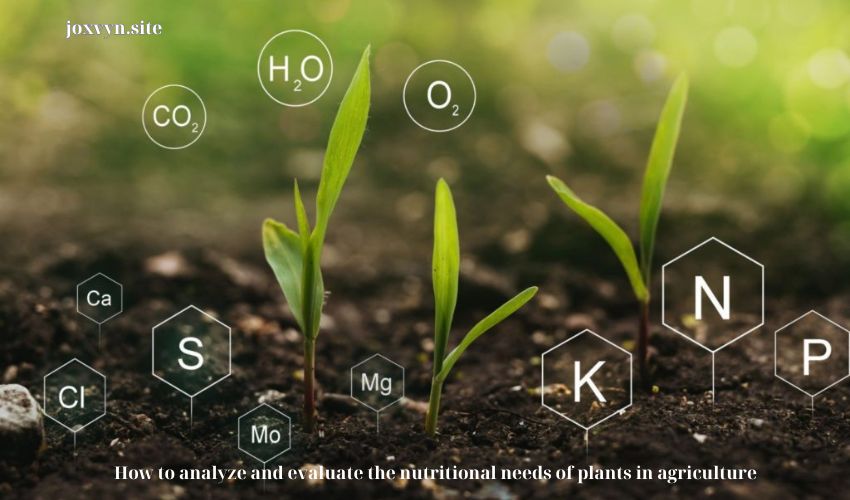“How to determine the nutritional needs of plants in agriculture” is an important part of analyzing and evaluating the growth of crops. This article will focus on how to accurately and effectively determine the nutritional needs of plants in agriculture.
I. Introduction to nutritional needs of plants in agriculture
In agriculture, the nutritional needs of plants are an important factor determining the growth and productivity of crops. To ensure that crops grow strongly and produce high yields, providing enough essential mineral elements is extremely important.
Nutritional needs of plants in agriculture
Essential mineral nutrients such as C, H, O, N, P, K, S, Ca, Mg, Fe, Mn, B, Cl, Zn, Cu, Mo all play important roles in the growth of plants. Deficiency of any element in this list can affect the development of plants, from growth to resistance to the external environment.
How to provide nutrients to plants in agriculture
Soil is the main source of minerals for plants. Fertilization must be done in the right amount and according to the type of plant to ensure that the plants receive enough of the necessary nutrients. In addition, it is also important to check the pH of the soil to ensure that the plants can absorb the minerals effectively.

II. Methods of analyzing plant nutritional needs
A. Soil analysis
– Chemical analysis of soil to determine the content of mineral elements necessary for plants.
– Determine soil pH to know the alkalinity or acidity of the soil, thereby adjusting the amount of fertilizer needed.
B. Leaf analysis
– Collect leaf samples to analyze the nutrient content of the leaves.
– Identify nutrient deficiency symptoms based on leaf color, size, and texture.
C. Using the wing test method
– Apply the wing testing method to determine the specific nutritional needs of each crop.
– Observe the plant’s response after being provided with different nutrients to evaluate the impact of each mineral element.
III. Application and implementation of determining plant nutritional needs
1. Soil analysis
To determine the nutritional needs of plants, soil analysis is very important. Soil analysis will show the content of mineral elements in the soil, thereby helping to determine which elements need to be supplemented for plants.
2. Perform a leaf check
Examining the leaves is another way to determine a plant’s nutritional needs. By observing the color, size, and shape of the leaves, growers can assess the plant’s nutritional status and determine which elements need to be supplemented.
3. Conduct fertilizer testing
To determine the specific nutritional needs of each crop, it is necessary to conduct a fertilizer trial. Through the trial, growers can evaluate the effectiveness of supplementing essential mineral elements for plants and adjust the fertilizer dosage accordingly.
IV. Issues to note when determining the nutritional needs of plants
1. Soil conditions
Plant nutrient needs are highly dependent on soil conditions. Soil can affect the absorption and use of nutrients, so soil analysis is important to determine a plant’s nutrient needs.
2. Plant type
Each type of plant will have different nutritional needs. Determining the specific nutritional needs of each type of plant is necessary to ensure their growth and development.
3. Health status of the tree
Plants can have deficiencies or excesses of certain nutrients, which will affect their health and productivity. Observing and assessing the health of your plants will help determine their nutritional needs accurately.
Learning how to determine the nutritional needs of plants is important to ensure they grow healthily. This knowledge allows growers to provide the right amount of nutrients, thereby optimizing plant growth and development.










